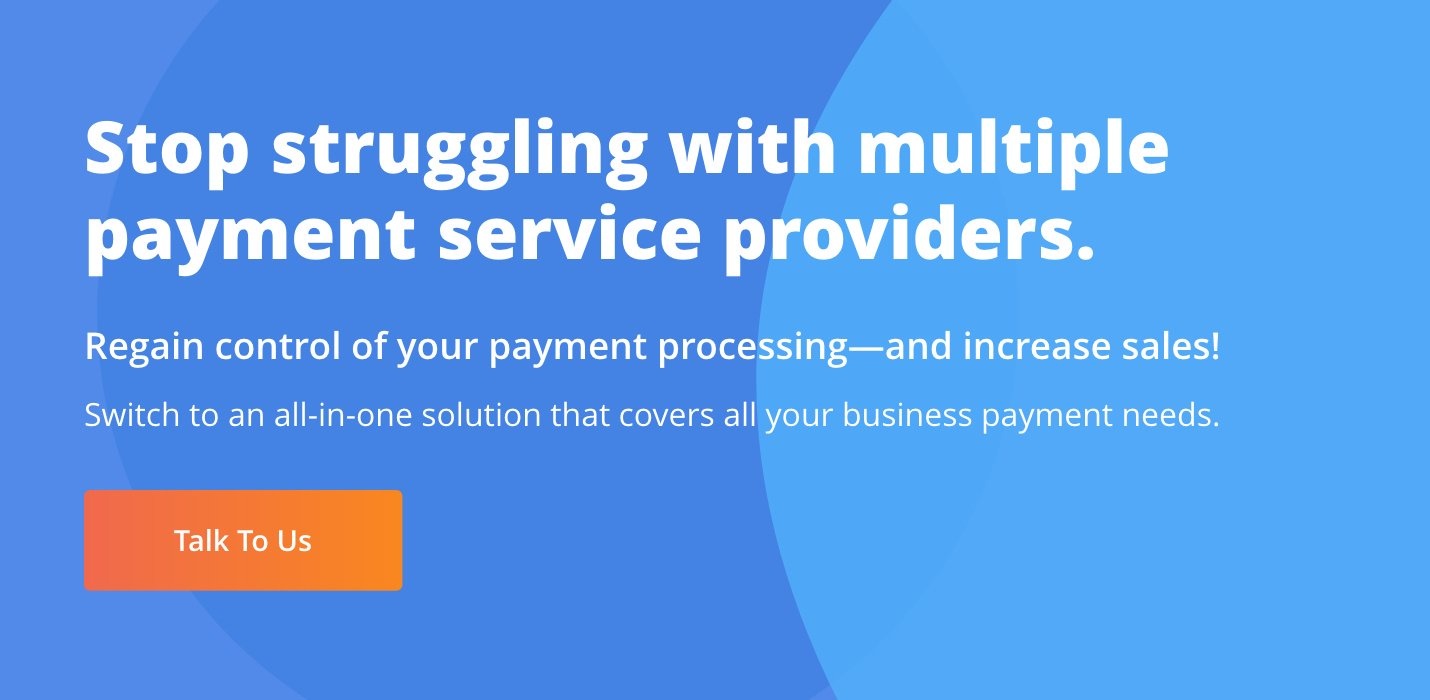If you’re selling online maybe you’re already well-versed on the latest goings-on in the payments industry, but what about future happenings? It’s equally as important to know what might be coming down the pike so you can be prepared. As a global payments company that’s constantly striving to improve the customer experience, we’re always looking ahead. Read on for some insights about payment trends and payment technology trends in 2019; as always, let us know if you have other ideas or reach out with questions.
These 2019 payment trends are on the horizon—is your business prepared? Click To Tweet
Payment Industry Trends 2019
1. Shoppers will be offered an increasing variety of experiences.
For a long time there were just two primary payment experiences—you either went to a store and handed your payment to a cashier; or you shopped online and entered your information on a checkout page.
In recent years, payments began to diverge from those familiar paths—a trend we believe will pick up in 2019. For one thing, digital and in-store experiences are increasingly converging. You can order a meal from Panera on your phone and pay for it there, then pick it up in-store, for example. You might also visit a restaurant, and order and pay on an iPad. You might even receive a text with a link to a payment page to make a donation to your favorite charity, for instance—imagine how quickly payments could be made using texts bundled with eWallets!
The continued emphasis on seamless payments will also contribute to this trend. Some app experiences are already making the payment process so invisible you don’t even think about the payment part. Uber, for instance, keeps its entire experience focused on getting a ride—not paying for it—by keeping customers’ information on file and charging them automatically, never even using the word “buy.” Increasingly popular online subscriptions store payment information to make checkout almost “disappear.” We expect to see an even greater variety of payment experiences emerge in 2019.
2. More businesses will look for ways to simplify their payment stack.
On average, businesses have five gateway processors and four acquiring banks. Maybe their original gateway didn’t have a particular payment method, so they added one; then, neither of the first two offered cross-border support, so they added another, and so on. This multiplicity of payment solutions happens almost inadvertently in the name of improving the payment process. Instead of improving it, however, these businesses are now struggling to manage accounts, integrations, payment data, and payouts.
Simplification is a payment processing industry trend that’s just on the horizon. All-in-one payment solutions are available that provide extensive and flexible coverage for just about anything a merchant wants to offer. We see more merchants taking advantage of these solutions in the upcoming year to make their payments life easier, and to have a partner who can help them navigate the complexities of payments as they grow.
3. Account takeover attempts will increase.
Account takeover used to be an issue primarily for banks and financial services companies, but not so much for eCommerce merchants. The experts at Kount expect that to change in 2019, with an increase in account takeover attempts happening in the eCommerce realm. Two factors are contributing to the projected increase:
1) More consumers are storing payment, billing, and shipping information with specific eCommerce stores—and using the same usernames and passwords at all of them. The information a hacker would gain just by accessing your Amazon account would, in many cases, be enough to architect successful social engineering attacks on your friends and family.
2) Many merchants’ fraud prevention solutions focus solely on evaluating transactions as they happen, not on protecting account information.
As the number of attacks increase, we’ll see more merchants picking up on the impact of account takeover fraud, and putting more emphasis on protecting the entire customer journey from beginning to end.
4. It will become more difficult to balance customer experience goals with fraud goals.
The emphasis on fast, frictionless payment transactions to meet customer expectations puts increasing pressure on merchants to ensure that fraud rules don’t get in the way. For instance, transactions where the billing address is different than the shipping address traditionally raise a red flag. Some merchants would disrupt the checkout flow to handle this with a manual review—stopping the order, investigating the addresses, and even sometimes calling the credit card company to prevent a fraudulent transaction from going through. Others would rather avoid a bad customer experience and let the transaction go forward.
In 2019, the tension between providing a frictionless customer experience and the need to reduce fraudulent purchases will force more merchants to reevaluate the way they manage fraud. The future of payment technology includes advanced fraud solutions that leverage machine learning. These solutions look at an array of risk indicators to maximize the number of transactions that are processed without sacrificing customer experience; more merchants would do well to take advantage of these new technologies in the year ahead to maximize revenue.

5. The new Visa Claims Resolution program will make inroads into mitigating chargebacks.
While third-party fraud is growing at about the same rate as eCommerce itself, chargeback fraud (legitimate purchases that are later disputed by the customer for various reasons) is growing upwards of about 30 percent each year (50 percent faster than third-party fraud). While some instances are considered “friendly”—people honestly don’t recognize a transaction on their credit card statement—others are malicious attempts at fraud. Chargeback fraud of all kinds is difficult to combat proactively without inadvertently declining a number of good transactions along the way.
In 2017 Visa revamped the outdated chargebacks process by injecting some advanced technology into it, giving merchants a new way to curtail chargebacks. The Visa Claims Resolution program informs merchants when a chargeback is initiated, giving them the opportunity to provide data points to counteract it, like the device ID number or IP address where the purchase originated. Our partner, Chargebacks911, expects merchants will be opting-in to the Visa Merchant Purchase Inquiry (VMPI) process in droves in 2019, to help mitigate instances of friendly fraud, and save (for some merchants) what could amount to hundreds of thousands of dollars in revenue monthly.
6. B2B billing for small- and medium-sized businesses will transition to digital.
According to CIO Review, U.S. B2B payments account for $38 trillion; currently, a major part of these payments are still made by traditional paper checks. While the disadvantages of a paper billing system have been widely acknowledged for some time—slower time to payment; more instances of lost invoices; and the costs of postage, paper, and printing among them—the switch to digital hasn’t taken off until just recently.
Readily available electronic invoicing options and these new industry partnerships are making it easier for B2B companies to adopt electronic billing. We think that 2019 will finally be the year of the B2B digital billing revolution.
7. The number of cross-border eCommerce transactions will increase.
The number of outlets in 2018 that reported on the popularity of digital cross-border buying is staggering. eMarketer Retail reported on a recent survey showing that 70 percent of online buyers made a purchase from a foreign site in 2017, up 6 percentage points from the year before. Accenture predicts that more than 200 million Chinese will be cross-border shopping by 2020, generating a total transactional value of $245 billion. And PaymentsSource reported that cross-border eCommerce is seeing “explosive growth,” noting that “more eCommerce merchants realize they’re missing out by not giving buyers in every market easy access to their preferred local payment option.” We could go on, but you get the idea—if you haven’t already positioned your business for success in this area, now is the time.
All in all, it promises to be an exciting year for eCommerce businesses—get prepared now so you can stay ahead! If you’d like to see how we can help ready your business for these 2019 payment trends—get in touch today.


